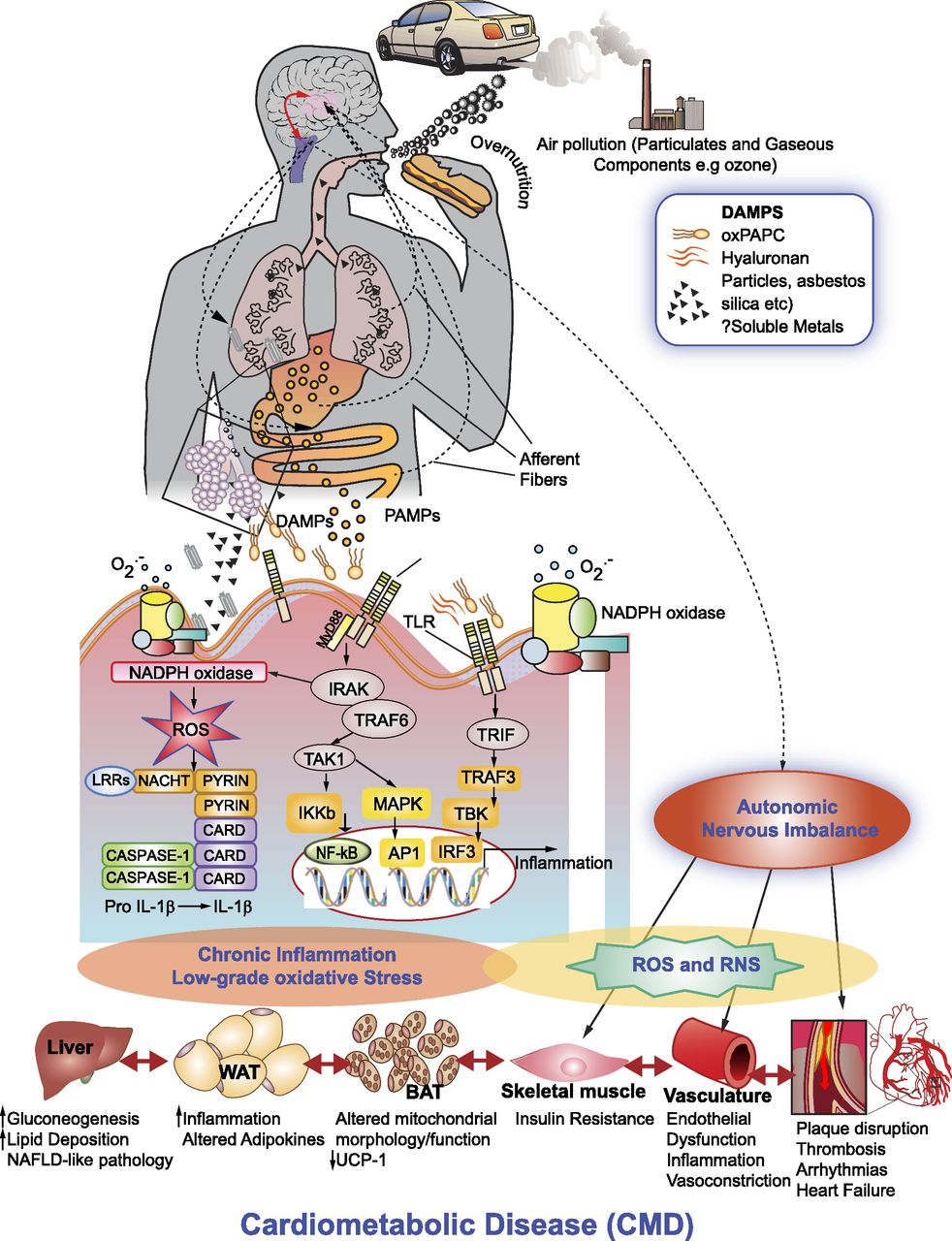Image

Source
Rajagopalan, Sanjay, and Robert D. Brook. 2012. “Air Pollution and Type 2 Diabetes.” Diabetes 61 (12): 3037–45. https://doi.org/10.2337/db12-0190.
Language
English
Contributor(s)
Group Audience
English

Caption: This image from a recent article in the journal Diabetes represents what the authors call a "hypothetical framework" by which TLRs (my favorite semiotic bridge and pattern-recognizer) transduce air pollution into chronic disease conditions like diabetes and heart disease.
The scientific persona of the "modest witness" that requires the authors to designate such an image as "hypothesized" is somehwat at odds with the genre of the scientific illustration and the air of definitiveness and literalness in its iconic mechanicity. The figure in Figure 2 is clearly male, illustrating an ongoing problem in both journal illustrations and biomedical research itself, both of which normalize and naturalize maleness. Our dude here is seen eating a hot dog, sub, or cheese steak sandwich--these may not be differences that make a difference-- and the accompanying text highlights the synergistic role that "overnutrition" plays (hypothetically, I remind you) in exacerbating the connections between the air-pollution-pattern of an "environment" and the inflamed-diseased-organ-pattern inside our bodies.
I can't say for sure (I'm a modest witness, too) but I'll go out on a limb and say you would not have found an image like this, bringing cars and factories together with cytokines and livers within a single frame, in a major biomedical journal even just five years ago. The isolated TLR in the previous slide is now almost lost in a complex translational shuffle. I chose this image -- not a useful visualization in the laboratory, but more a mechanism of visual communication -- because it depicts these new patterns of complexity, on multiple scales. They are the collective result of new inter- and trans-disciplinary research efforts among immunologists, cardiologists, diabetes researchers, geneticists, biochemists, toxicologists, epidemiologists, and others.
Design statement:
This image conveys how the community of practice Fortun studies (environmental health scientists) themselves understand and visualize (“illustrate” might be better) their “object of concern” -- here, how “cardiometabloic diseases” is a multi-scale, emergent product of complex ecologies and systems. It also directs attention to changing patterns in how objects like toxicity and their associated disease states are understood: toxic causes (factories, cars, eating habits) multiply into new patterns, imbricated with new patterns of in-body objects (organs, tissues, receptors, molecules). Those interconnected patterns point in turn to another: scientists representing an increasing number of disciplines (pulmonologists, immunologists, geneticists, epidemiologists), each with their own technologies, styles, interests, and research traditions, coming into new patterns of collaboration, shaped by changing patterns of (largely) public research support.
A relevant part of the text reads: